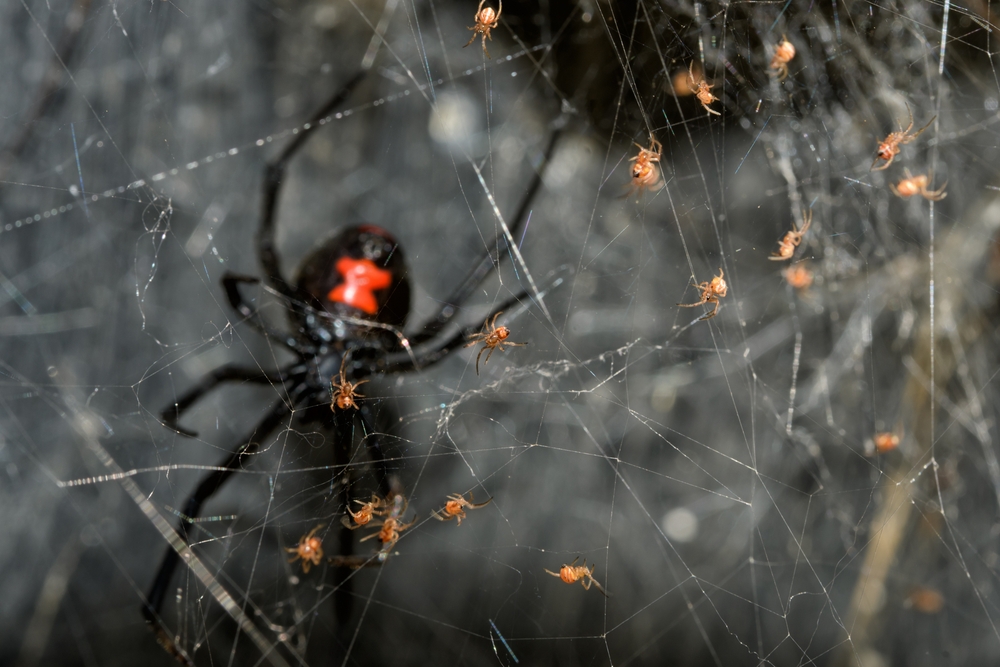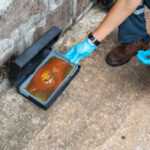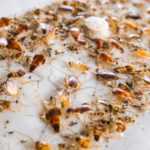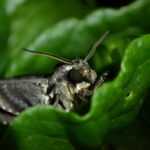Identifying a Black Widow Web: Appearance and Unique Traits
Discover how to spot a black widow web, its unique shape, and the dangers it may hide. Learn simple tips to stay safe around these spiders.
Black Widow Web: Identification and Facts You Should Know
If you’re trying to identify a black widow web, you’re likely concerned about encountering these dangerous spiders. Black widow webs are known for their chaotic and irregular structure, unlike the more symmetrical webs of other spiders. In this article, we will explore the key characteristics of black widow webs, their role in the spider’s life, and how you can identify and avoid them.
- Black widow webs are irregular and multi-level, designed for maximum efficiency in capturing diverse prey through their strong, sticky silk.
- Black widow spiders utilize their webs for hunting, protection, and reproduction, making the structure of the web crucial for their survival.
- Both male and female black widow spiders exhibit distinct web characteristics that reflect their roles, with females creating larger, more complex webs for trapping prey and protective purposes.
- Several species of black widow spiders are present across different regions, including the southern black widow and northern black widow, each with unique web and behavioral traits.
Black Widow Web Characteristics
Black widow spider webs are renowned for their strong and durable composition, making them highly effective in capturing prey. The silk of these spiders is exceptionally sticky and robust, ensuring that anything touching the web is quickly immobilized. This stickiness is a key feature, making black widow webs highly efficient at trapping unsuspecting insects.
Another distinctive characteristic is the design of a black widow web. Black widow webs are irregular and chaotic, unlike the more symmetrical, orb-shaped webs of other spiders. This seemingly chaotic design is strategic, enhancing the web’s ability to ensnare prey from multiple angles. The tangled structure ensures that insects and other small creatures are caught and held firmly until the spider can subdue them.
Apart from their shape and composition, black widow webs feature a multi-level structure. Support threads, tangle threads, and vertical trap threads make up these webs, each serving a specific function in overall effectiveness. This complexity allows black widow spiders to maximize their chances of capturing food and provides them with a secure environment to live and reproduce.
How Black Widows Use Their Webs
Primarily, black widow spiders use their webs to capture prey. These expansive webs are designed to ensnare a variety of insects, such as flies, beetles, grasshoppers, and caterpillars, which serve as their main food source. The capture spiral within the web is made from a specific type of silk that can stretch significantly, allowing it to catch and retain prey. This elasticity is crucial for holding onto struggling insects until the spider can move in for the kill.
Besides capturing prey, black widows use their webs for other purposes. They wrap their captured prey in silk, using the comb foot—a row of strong, curved bristles on their hind legs—to further immobilize the insects. This not only prevents the prey from escaping but also makes it easier for the spider to consume its meal. The silk also serves as a safety line, allowing for a quick escape if disturbed.
The web also acts as a protective environment for black widow spiders. It provides shelter from predators and harsh weather conditions, ensuring the spider’s safety and well-being. Creating a secure habitat allows black widows to focus on capturing prey and reproducing, ensuring their species’ survival.
The versatility of their silk and the strategic design of their webs highlight the remarkable adaptability of black widow spiders, specifically Latrodectus mactans.
Identifying a Black Widow Web
Recognizing a black widow web is crucial for avoiding dangerous encounters. Often found near the ground, these webs appear in places like storage sheds, crevices, and around building foundations. They typically construct their webs under flat rocks, logs, along embankments, or in outbuildings. These locations offer cover and protection, while also placing their webs in the path of potential prey.
A tangled and uneven appearance is one of the most noticeable features of a black widow web. Despite its chaotic look, the web is meticulously constructed to maximize effectiveness in capturing prey. The web consists of three distinct levels: support threads, tangle threads, and vertical trap threads. This multi-level design helps ensure that insects and other small creatures are efficiently trapped and immobilized.
The presence of protective cocoons and egg sacs with red spots is another key indicator of a black widow web. Female black widow spiders create these egg sacs from silk and protect them vigilantly until the spiderlings hatch. Seeing these egg sacs suspended within a web strongly indicates a female black widow is nearby; exercise caution to avoid a potentially dangerous black widow spider bite.
The Role of Silk in Black Widow Webs
Black widow spiders produce silk that is truly a marvel of nature. It is derived from complex hierarchical structures rather than simple proteins, giving it remarkable tensile strength and elasticity. This composition allows the silk to withstand significant stress and strain, making it stronger than many synthetic materials. The silk fibers of black widow spiders possess exceptional material properties, comparable to steel.
The hierarchical structure of the silk is key to its strength and elasticity. Proteins within the silk are organized into nano-sized structures, contributing to its durability. This complexity is achieved through a mechanism in the spider’s silk glands, transforming proteins from a liquid state into solid threads. This process ensures the silk can be used effectively in web construction and prey capture.
The role of silk in black widow webs extends beyond its physical properties. Consisting of supporting threads, tangle threads, and trap threads, the web’s structure is designed to immobilize prey efficiently. This allows black widow spiders to feed safely and effectively, ensuring their survival and reproductive success.
The intricate process of silk formation and its strategic use in web construction highlight the remarkable adaptability and resourcefulness of black widow spiders.
Prey Caught in Black Widow Webs
Black widow spiders are adept hunters, capturing a wide range of insects in their webs. Common prey includes flies, mosquitoes, grasshoppers, beetles, and caterpillars. Ensnared by the sticky and strong silk of the web, these insects cannot escape once trapped. The spider then injects digestive enzymes, liquefying the prey for easy consumption.
Occasionally, black widow webs may trap small animals such as lizards and small mammals. Although these larger prey items are not primary targets, their capture highlights the effectiveness of black widow webs in trapping various creatures. The versatility of the web’s design and the strength of the silk allow black widow spiders to secure a wide range of food sources, ensuring their survival in different environments.
The variety of prey caught in black widow webs demonstrates the adaptability of these spiders. In both urban areas and the wild, black widows effectively capture and consume the insects and small animals that venture into their webs. This adaptability makes black widow spiders successful predators and underscores the crucial role of their webs in survival.
Differences Between Male and Female Black Widow Webs
Male and female black widow spiders exhibit significant web differences, reflecting their distinct roles and behaviors. Males are generally smaller than females, often less than half the size, which influences the size and structure of the webs they spin. Females create large, intricate webs for capturing prey and protecting offspring, while males are usually seen on female webs, highlighting their secondary role. The female black widow spider is particularly known for its complex web design.
The primary function of male black widow spiders is to search for and mate with females. This task often leads them to venture into the webs of female black widows, where they must navigate the complex structure without becoming prey themselves. The differences in web construction between males and females illustrate the distinct functions each gender plays in their respective webs. Females focus on creating effective traps and protective environments, while males prioritize finding mates.
Understanding these differences helps identify black widow webs and recognize the presence of male and female spiders. The distinct characteristics of male and female webs reflect the unique behaviors and survival strategies of black widow spiders, offering insight into their complex world.
Why Black Widow Webs Are Dangerous
Black widow webs pose a significant danger due to the potent venom of the spiders that inhabit them. Containing neurotoxins, the venom of a northern black widow spider is among the most potent in North America, causing severe health issues. Neurotoxins can cause symptoms like muscle cramps, anxiety, and difficulty breathing, making black widow bites a serious health concern.
Typically painless at first, a black widow spider bite can escalate to severe symptoms within an hour. Muscle cramps and neurological pain are common, often requiring swift medical attention. Vulnerable populations, like children and the elderly, are particularly at risk and may experience more severe reactions.
While deaths from black widow bites are rare, the potential for serious reactions remains. This danger underscores the importance of identifying and avoiding black widow webs. Understanding these risks helps individuals take appropriate precautions and seek timely medical attention if bitten.
Preventing Black Widow Webs Around Your Home
Preventing black widow webs around your home reduces the risk of dangerous encounters. These webs are often found in undisturbed areas, making them potential hazards for those working or playing in these locations. Regular cleaning and maintenance of storage sheds, garages, and other areas can help prevent black widow infestations.
Yellow light bulbs in outdoor fixtures are another effective strategy. These bulbs attract fewer insects, reducing the food source for black widows and making your site less appealing to them. Sealing cracks and crevices around your home can also prevent black widows from entering and building webs in hidden areas.
Understanding the characteristics and dangers of black widow webs is crucial for staying safe. These webs are strong, durable, and intricately designed to capture prey. Black widow spiders use their webs for various purposes, including capturing prey, providing shelter, and protecting their offspring. Identifying these webs and understanding the differences between male and female webs can help in recognizing potential hazards.
Preventive measures, such as regular cleaning, using yellow light bulbs, and sealing entry points, can help keep black widows away from your home. If you encounter a black widow web, contacting a professional pest control service can provide the necessary expertise to address the issue safely and effectively. Stay vigilant and take proactive steps to protect your home and family from these dangerous spiders.
Frequently Asked Questions
What to do if you find a black widow web?
If you find a black widow web, it’s essential to vacuum the area to remove the web and any spiders, and consider spraying a mixture of vinegar and water to deter their presence. Maintaining cleanliness and eliminating potential hiding spots can help prevent further infestations.
Why are black widow webs so messy?
Black widow webs are messy because they serve as a medium for communication through vibrations and pheromones, allowing female spiders to attract mates and signal their presence. This unique structure is essential for their survival and reproduction.
What kind of web do black widows have?
Black widow spiders construct irregular, tangled webs that feature strong threads and are typically found in dark, covered areas. These webs are designed to efficiently trap and hold prey with their uneven structure.
How can I identify a black widow web?
To identify a black widow web, look for a tangled, uneven web structure typically found near the ground in undisturbed areas like storage sheds. These webs may also contain protective cocoons or egg sacs with red spots on the underside.
What should I do if bitten by a black widow spider?
If bitten by a black widow spider, seek immediate medical attention, particularly if you have severe symptoms like muscle cramps, anxiety, or difficulty breathing. Prompt treatment is crucial for effective management of the symptoms.



